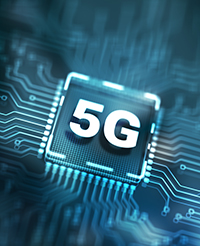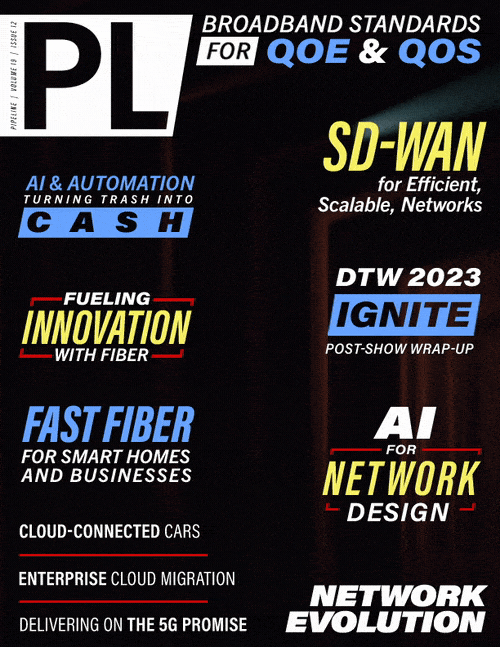Delivering on the Promise of 5G's Potential
By: Adam Chin

Ask most laypeople, and they would say that 5G has not lived up to the hype. For years, mainstream media and wireless carriers have touted the fifth-generation mobile broadband technology known as 5G as no less than a world-changing, “fourth industrial revolution,” with examples that include the ability to empower robot surgeries through rural telemedicine and creating completely interconnected “smart cities” of the future. In truth, 5G technology does have immense potential, but has also proved more difficult to implement and scale, leaving many customers underwhelmed at best, or dismissive of the promise of 5G as nothing more than hype. With the right solutions, however, that hype can finally become more of a reality for more people in many more settings and real-world environments.
The advancement of 5G technologies presents a specific set of unique challenges across the entire customer experience, from customer to operator. As 5G continues to roll out across the globe, the industry must address the inherent challenges in this section of the spectrum while amplifying its many benefits so it can achieve its true potential. This will require engineers to discover and develop innovative improvements in every step of the 5G delivery system, and that begins with looking at the networks, and specifically the spectrums themselves.
C-band, the Good and Bad
The adoption of C-band in 5G networks comes with a litany of both advantages and disadvantages. On the positive side, C-band frequencies, ranging from 3.4 to 4.2 GHz, offer a compelling balance between data capacity and signal coverage. This makes C-band inherently well-suited for achieving the objectives of 5G, providing faster download and upload speeds, lower latency, and supporting a higher number of connected devices simultaneously.
We’ve tested the C-band performance with real-world devices and seen download speeds range from 200 to 450 Mbps in San Diego suburban areas. Although it’s not as fast as the mmWave network (usually around 1 Gbps), C-band exhibits a more robust connectivity without requiring strict line-of-sight. For mmWave networks, those 1Gbps download speeds can easily drop to 100Mbps when the user turns away from the data delivery source.
While more stable than mmWave networks, C-band does have some associated challenges to consider. The C-band spectrum is not as vast as lower frequencies, which can limit its ability to cover large, rural areas effectively. Furthermore, the C-band spectrum has been a subject of contention due to its existing usage for satellite communications and fixed services. The reallocation of these frequencies for 5G might require careful negotiation and mitigation to avoid disrupting existing services. In essence, while C-band offers a promising solution for 5G expansion, its implementation should be approached strategically to balance its benefits with potential hurdles.
C-band signals can also be relatively easier to block compared to lower-frequency signals due to their moderate frequency range. The propagation characteristics of C-band, which falls within the microwave spectrum, make it susceptible to certain types of obstacles and interference. While C-band signals have adequate penetration capability, they may struggle to penetrate dense or thick obstacles, such as concrete buildings or mountainous terrain. This limited penetration can lead to signal blockage in urban environments where many obstacles are in close proximity.
Due to the similarity of propagation characteristics of mmWave, C-band cell planning also becomes difficult for operators. As frequency goes up, we see more coverage holes with scattered locations. Using small cells to fill them is conceptually easy but brutally time-consuming, and it cannot be justified financially. It would be a colossal misappropriation of resources to set up a complete small cell just to serve one single lane or alley.
Are Repeaters The Answer?
To resolve aforementioned problems, deploying repeaters is considered an effective approach to mitigate the gap between operators and users. The cost of repeaters ranges from 1% to 10% of a radio unit (RU) of a gNB, about a 90% discount, while achieving equitable coverage to other solutions, making them even more attractive with respect to CAPEX reduction. There are various types of repeater categories to be introduced, and the following serves as a primer on each.
Analog vs. Digital
Analog and digital repeaters process data differently. Analog repeaters are basic and often referred to as “amplify and forward” devices. Meanwhile, digital repeaters are more complicated, and they require transceivers (ADC and DAC) and a digital processing unit (MCU, DSP or FPGA). Once the data is down to the digital domain, it is possible to decode and encode the symbol or bit to improve the Signal-to-Interference-plus-Noise Ratio, or SINR. These additional blocks enable considerable features for the modern repeater design at the expense of latency and price.



















